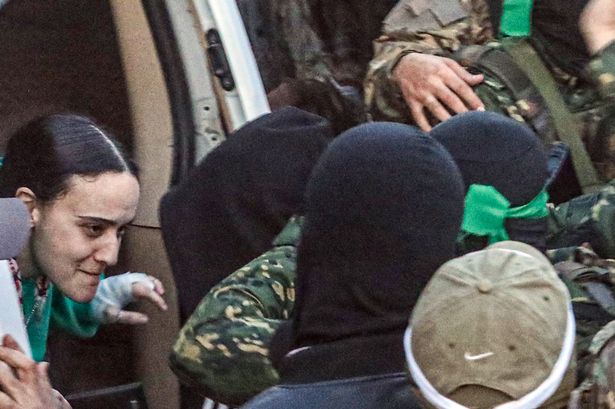The sudden eruption of violence on October 7, 2023, shattered the lives of countless individuals, transforming an ordinary Saturday into a nightmare of fear and uncertainty. Among the most harrowing experiences were those endured by the hostages taken by Hamas militants during their incursion into Israeli territory. While the details of each captivity varied, a grim pattern emerged, marked by fear, deprivation, and the constant threat of violence. These captives, snatched from their homes, workplaces, and even a music festival, were plunged into a terrifying world where their survival depended entirely on the whims of their captors. They became pawns in a brutal conflict, their lives hanging precariously in the balance as the world watched in horror.
The day would likely begin in the disorienting confines of an unknown location, possibly a cramped room, a hastily dug bunker, or even a moving vehicle. The hostages, stripped of their freedom and dignity, would be surrounded by armed militants, their every move scrutinized, their every word potentially misinterpreted and met with aggression. The constant presence of weapons, the shouted commands in a language they might not understand, and the palpable tension would create an atmosphere of overwhelming fear and anxiety. Sleep would be fitful, punctuated by nightmares and the jarring sounds of the ongoing conflict outside. The simple act of eating or drinking would become a privilege, subject to the arbitrary decisions of their captors. Basic necessities like hygiene and medical care would likely be nonexistent, adding physical discomfort to the immense psychological strain. Communication with the outside world, a lifeline to hope, would be severed, leaving them isolated and vulnerable in a sea of uncertainty.
The psychological toll of this captivity would be immense. The constant fear for their lives, the lack of control over their own fate, and the separation from loved ones would create a profound sense of helplessness and despair. The uncertainty surrounding their future, the knowledge that they could be killed at any moment, would gnaw at their mental fortitude. Every passing hour would amplify their anxiety, turning minutes into an eternity of dread. The hostages would be forced to confront their own mortality, grappling with the stark reality of their situation and the very real possibility that they might not survive. This constant state of terror would likely exacerbate any pre-existing mental health conditions and create new traumas that could haunt them long after their eventual release.
For hostages like Emily Damari, a British citizen attending a music festival near the Gaza border when the attacks began, the experience would have been particularly jarring. The vibrant atmosphere of music and celebration would have been violently disrupted, replaced by the chaos and terror of the assault. The transition from carefree enjoyment to the grim reality of captivity would have been a brutal shock, leaving her and others disoriented and vulnerable. The sudden loss of freedom, the separation from friends, and the immersion in a hostile environment would have been deeply traumatic, compounding the fear and uncertainty of the situation. The memories of the festival, once a source of joy, would likely become intertwined with the trauma of her captivity, forever tainted by the violence and fear she experienced.
The days would blur into an indistinguishable cycle of fear and monotony. The hostages might be moved from location to location, adding to their disorientation and preventing them from establishing any sense of stability. They might be forced to participate in propaganda videos, their words carefully scripted by their captors, their faces broadcast to the world as proof of Hamas’s control. This forced participation would further dehumanize them, turning them into unwilling actors in a drama they didn’t choose. The constant threat of violence would hang over them like a dark cloud, a reminder of their precarious position and the power their captors wielded over their lives. Any attempt at resistance, however small, could be met with swift and brutal retribution, reinforcing the cycle of fear and submission.
The eventual release, whenever it came, would be a moment of immense relief, but the scars of captivity would likely remain. The trauma of their ordeal could manifest in a variety of ways, from post-traumatic stress disorder and anxiety to depression and difficulty reintegrating into normal life. The memories of their captivity, the fear, the uncertainty, the dehumanization, would likely haunt them for years to come. The road to recovery would be long and difficult, requiring ongoing support and understanding from family, friends, and mental health professionals. While they might eventually regain their physical freedom, the psychological wounds of their captivity could linger, a constant reminder of the ordeal they endured and the fragility of life in a world marred by conflict.














